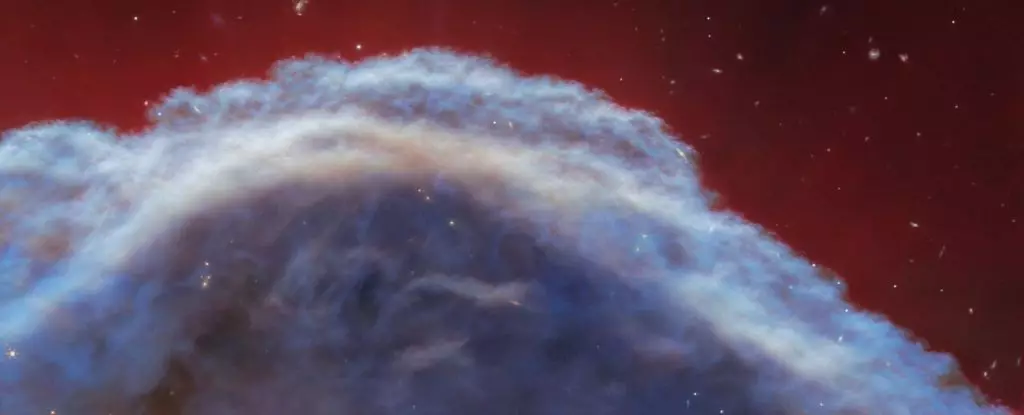The Horsehead Nebula, a well-known structure in Earth’s sky, has recently been brought into focus like never before. Through mid- and near-infrared observations conducted by the James Webb Space Telescope, astronomers have discovered previously unseen aspects of this space cloud. This detailed image provides a closer look at the region above the ‘horse’s’ head, revealing intricate tendrils and filaments in stunning resolution.
Situated approximately 1,300 light-years away, the Horsehead Nebula is part of the Orion molecular cloud complex. This distinct cloud is dense with dust and gas, making it appear as dark as shadows in optical light. However, when viewed through different wavelengths or magnified closely, its appearance shifts from a dark void to a luminous, billowing cloud.
The Horsehead Nebula, despite its lack of an internal light source, is illuminated by the nearby Sigma Orionis, a system of young, hot stars radiating at temperatures around 34,600 Kelvin. Within the nebula, a dense clump of material has collapsed under gravity, harboring small stars in the process of formation that are obscured by the surrounding dust. The intense radiation from external stars is causing photodissociation, where molecules disintegrate under the strong ultraviolet light, creating a mostly neutral interstellar medium.
The recent observations made by the James Webb Space Telescope offer valuable insights into the Horsehead Nebula and its surroundings. By examining the emission from grains smaller than 20 nanometers, astronomers can track particles like interstellar polycyclic aromatic hydrocarbons, as well as the light reflected by larger grains and ionized hydrogen present in the cloud. These images provide a foundation for further analysis of the nebula’s chemical composition and the size and movement of dust grains based on light scattering patterns.
Moving forward, researchers plan to conduct a comprehensive study of the emitted light from the Horsehead Nebula to develop a detailed model of the evolution of dust within the photodissociation region. This analysis will enhance our understanding of how these clouds transform and dissipate over time, eventually releasing the young stars enveloped within.
The recent observations of the Horsehead Nebula have unveiled a wealth of information about this enigmatic space cloud. By utilizing advanced technology and precise imaging techniques, astronomers are unraveling the mysteries of stellar nurseries and interstellar gas clouds, expanding our knowledge of the universe’s intricate processes.

Leave a Reply